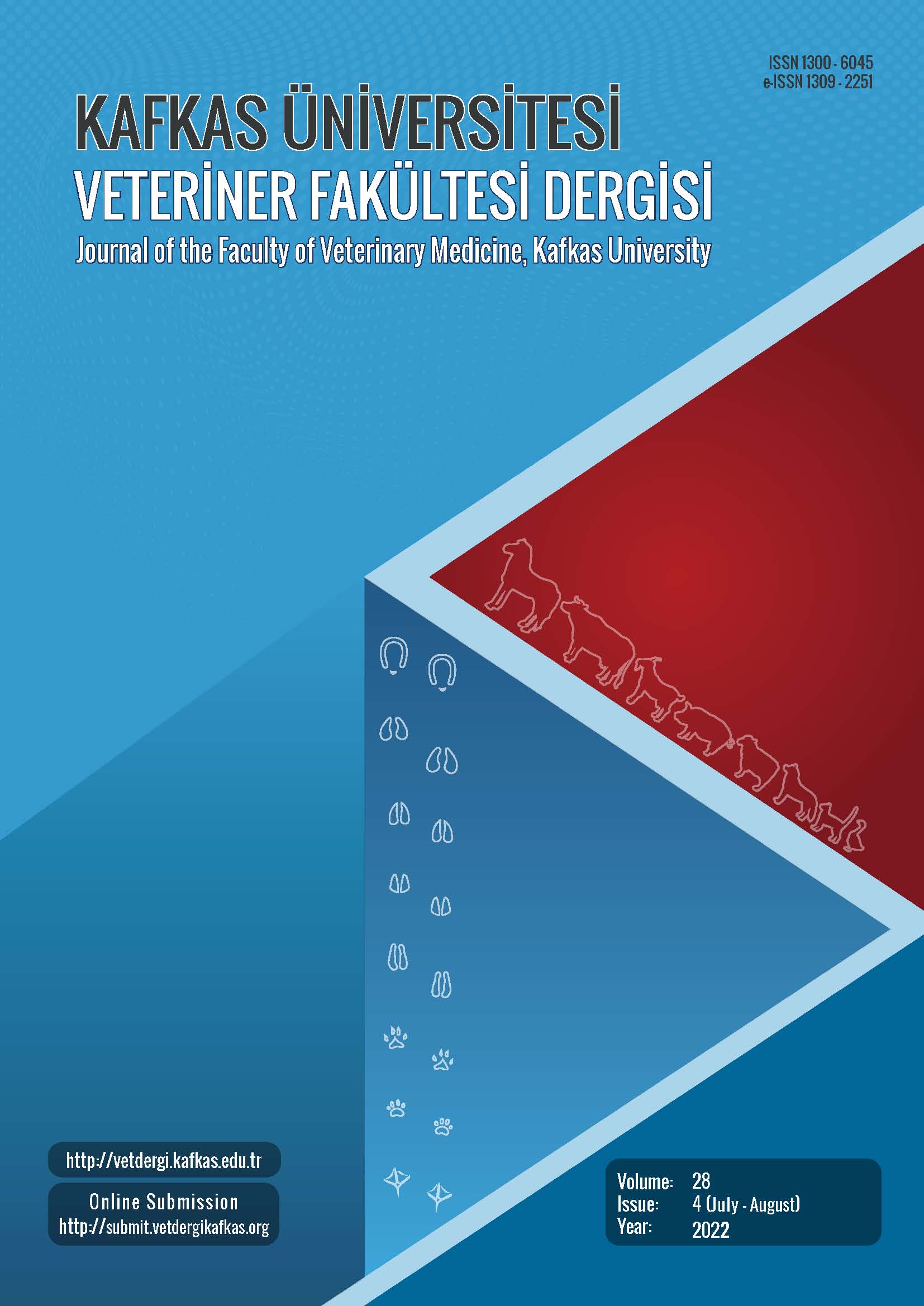
This journal is licensed under a Creative Commons Attribution-NonCommercial 4.0 International License
Kafkas Üniversitesi Veteriner Fakültesi Dergisi
2022 , Vol 28 , Issue 4
Evaluation of the Effect of Naringenin Liposomal Formulation on Retinopathy in an Experimental Rabbit Model
1Nanotechnology Research Center, Ahvaz Jundishapur University of Medical Sciences, Ahvaz, IRAN2Department of Pharmaceutics, Faculty of Pharmacy, Ahvaz Jundishapur University of Medical Sciences, Ahvaz, IRAN
3Department of Ophthalmologo, Ahvaz Jundishapur University of Medical Sciences, Ahvaz, IRAN
4Department of Pathobiology, Faculty of Veterinary Medicine, Shahid Chamran University of Ahvaz, Ahvaz, IRAN DOI : 10.9775/kvfd.2022.27538 Neovascularization is a hallmark of diabetic retinopathy (DR). Naringenin has protective eff ect against DR. Liposomes are suitable Nano-carriers for ocular drug delivery. Hence, we prepare and evaluate the eff ect of naringenin liposomal formulation (NLF) on DR in a rabbit model. NLF was prepared by thin lipid film method. NLF characteristics were evaluated by Scanning Electron Microscope (SEM), Dynamic Light Scattering (DLS) and zeta potential. NLF release pattern and stability were assessed. Th irty-six rabbits were divided into six groups (control, placebo, bevacizumab and NFL (200, 500 and 800 μg/mL)). Intravitreal injection of Alpha-aminoadipic acid (α-AAA) induced retinopathy. NFL was administered for three weeks. Neovascularization scoring was done by an eye examination. Furthermore, histological evaluation of retina was performed for angiogenesis and dilation of vessels. SEM imaging revealed successful NLF preparation. Th e particle size obtained 148 to 215 nm. Encapsulation Efficiency were 43% and 66% which is good for naringenin. Zeta potential was 15mV. Two formulations of NLF showed suitable release (% drug released aft er 1 h (%D1) was 5.5% and 3.1% and % drug released aft er 24 h (%D24) was 72.93% and 52.01%). NLF exhibited an acceptable stability. Histological findings confirmed neovascularization. Treatment with bevacizumab and three doses of NLF significantly decreased neovascularization score, respectively. Furthermore, histological results revealed that three doses of NLF especially 800 μg/mL improved damage caused by α-AAA in the retina. NFL showed protective eff ects against neovascularization. We showed that NFL is capable of nanoformulation with a great attenuating eff ect against neovascularization. Finally, the findings revealed that NFL is an anti- neovascularization agent. Keywords : Liposome, Naringenin, Neovascularization, Rabbit, Retinopathy










